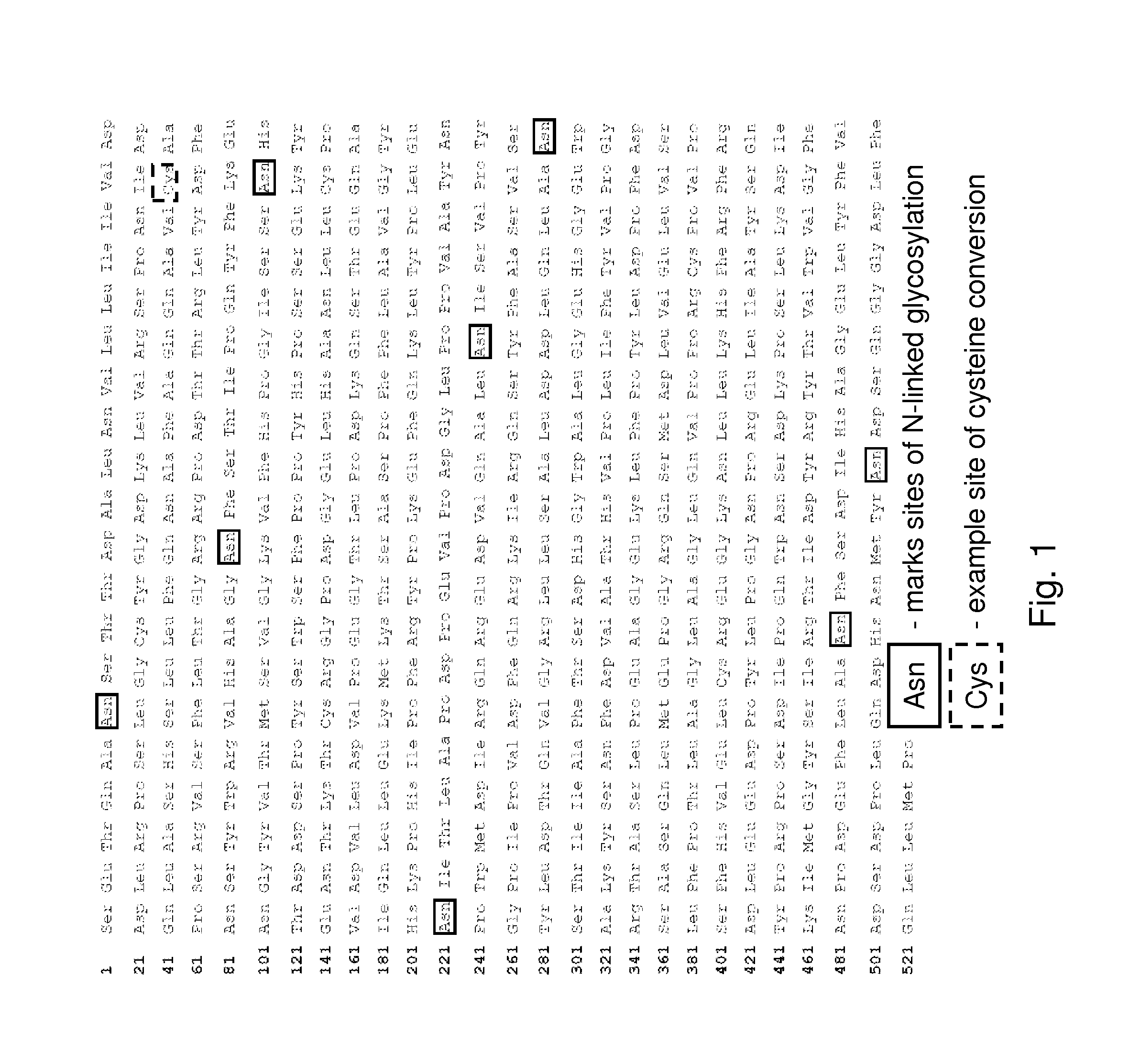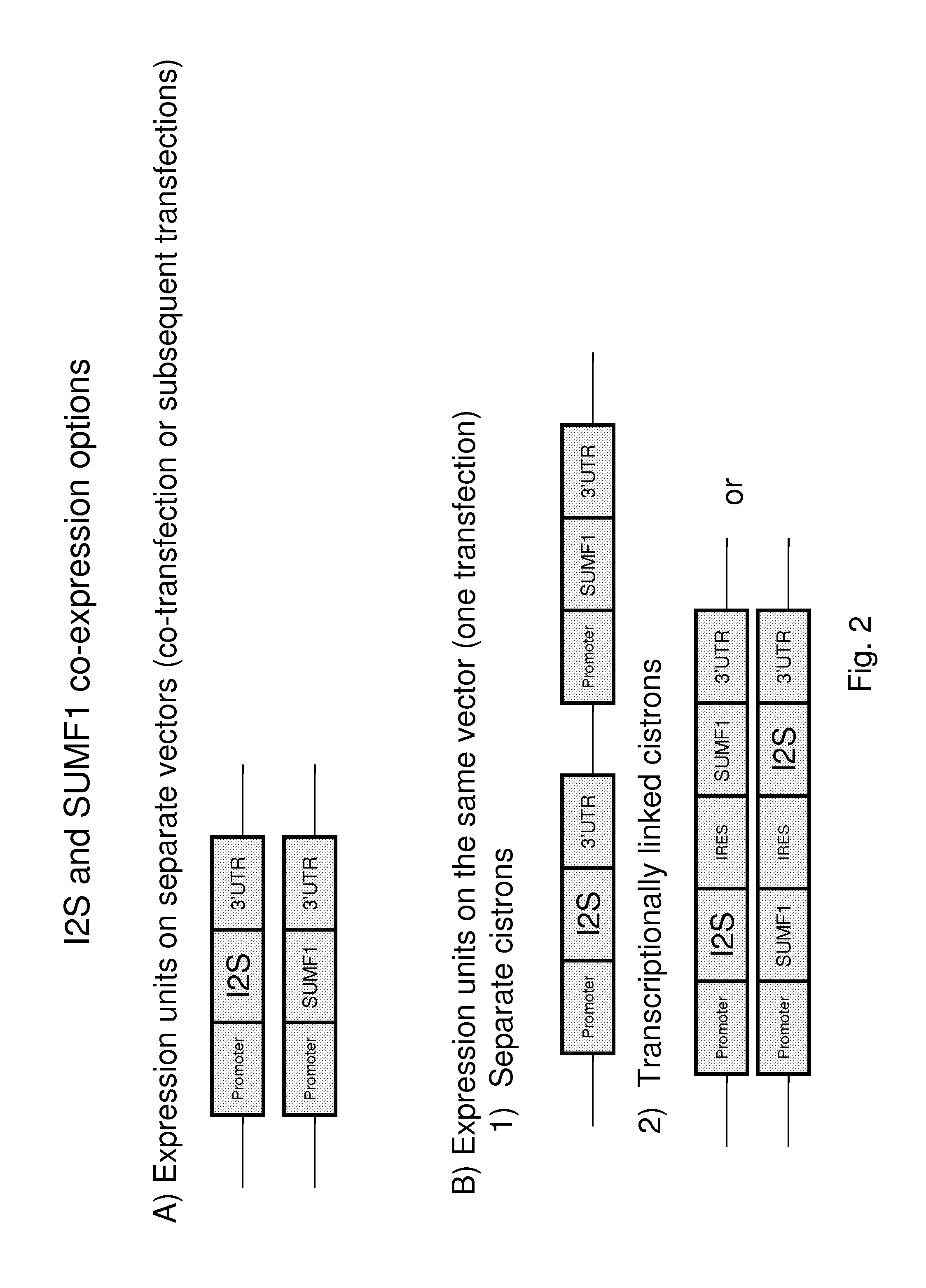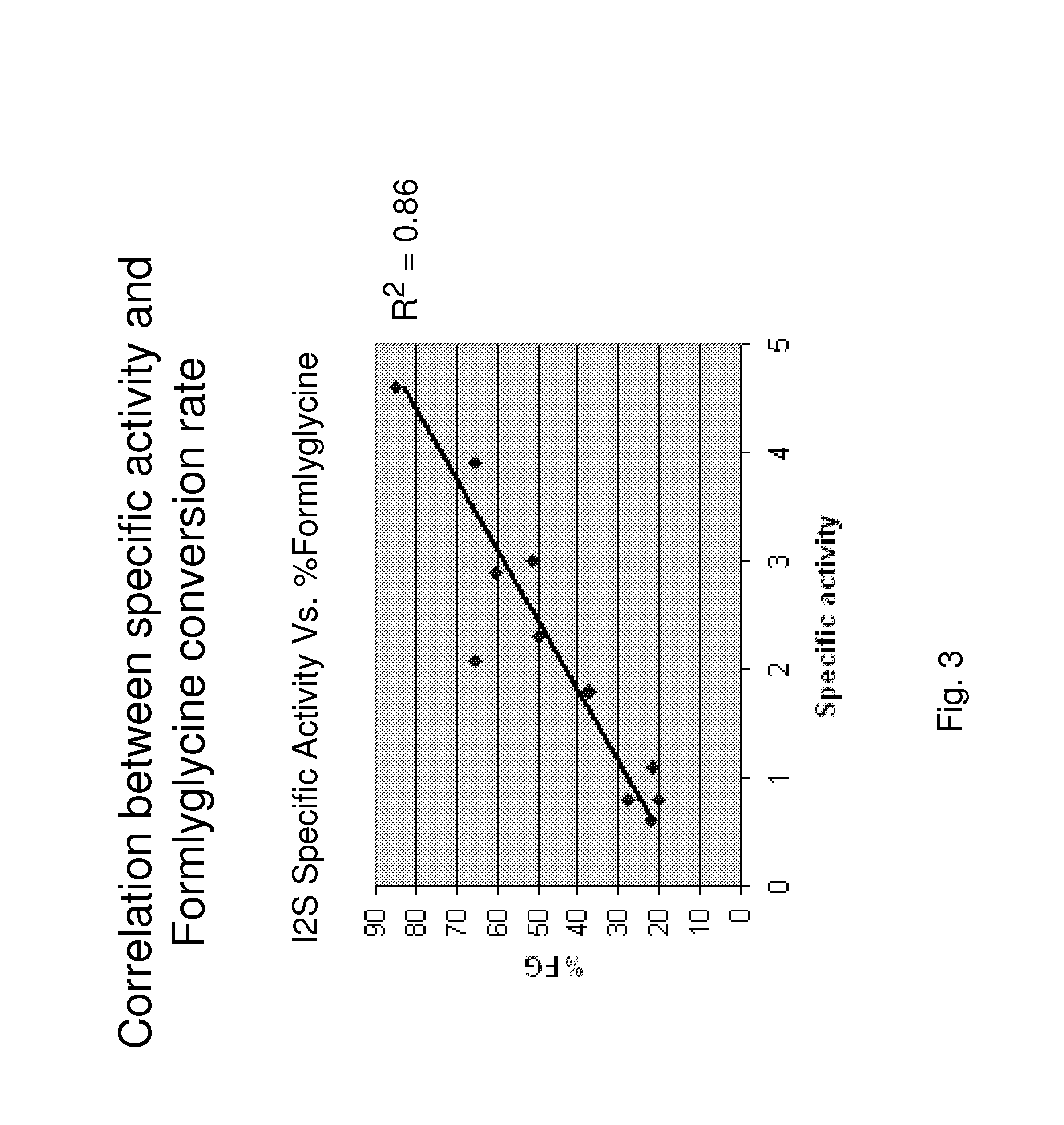Cells for producing recombinant iduronate-2-sulfatase
a technology of iduronate and sulfatase, which is applied in the field of cells for producing recombinant iduronate2sulfatase, can solve the problems of reducing the enzymatic activity of recombinant i2s protein, affecting the enzymatic activity of i2s protein, so as to improve the enzymatic activity and the enzymatic activity o
- Summary
- Abstract
- Description
- Claims
- Application Information
AI Technical Summary
Benefits of technology
Problems solved by technology
Method used
Image
Examples
example 1
Generation of Optimized Cell Line Co-expressing recombinant I2S and FGE
[0132]This example illustrates an exemplary optimized cell line co-expressing recombinant I2S and FGE that can be used to produce recombinant I2S protein. It will be clear to one skilled in the art, that a number of alternative approaches, expression vectors and cloning techniques are available.
[0133]A typical mature form of human iduronate-2-sulfatase enzyme (I2S) is a 525-amino acid glycoprotein that undergoes extensive processing and post translational modification for enzyme activation, such as glycosylation and cysteine conversion to formylglycine (FIG. 1). In mammalian cells, conserved cysteine residues within the I2S (i.e., at amino acid 59) enzyme are converted to formylglycine by the formylglycine generating enzyme (FGE). The conversion of cysteine to formylglycine within the active site of the I2S enzyme is an important step in generating the active form of the human sulfatase enzyme. The purpose of thi...
example 2
Evaluation of Stable Cell Lines Co-Expressing I2S and FGE
[0142]Additional experiments were carried out to characterize two cell lines 2D and 4D co-expressing I2S and FGE.
[0143]First specific activity of the I2S enzyme was evaluated. I2S enzyme produced from the 2D and 4D cell lines were analyzed for specific activity using a fluorescence based 4-MUF assay. Briefly, the assay measures the hydrolysis of I2S substrate 4-methylumbelliferyl-sulfate (4-MUF-SO4). Upon cleavage of the 4-MUF-SO4 substrate by I2S, the molecule is converted to sulfate and naturally fluorescent 4-methylumbelliferone (4-MUF). As a result, I2S enzyme activity can be determined by evaluating the overall change in fluorescent signal over time. For this experiment, purified I2S enzyme produced from the I2S-AF 2D and 4D human cell lines were incubated with a solution of 4-methylumbelliferyl-sulfate (4-MUF-SO4), Potassium Salt, Sigma Cat. # M-7133). Calibration of the assay was performed using a serie...
example 3
Serum-free Suspension Cell Culture
[0153]This example demonstrates that a large scale serum free suspension culture may be developed to cultivate an optimized cell line to produce recombinant I2S.
Serum Free Suspension Cell Culture System
[0154]Briefly, a seed culture was established using the 2D or 4D cell line of Example 1. Cells were transferred to a 250 mL tissue culture shake flask containing serum-free chemically defined expansion medium supplemented with MTX for selection, adjusted with sodium bicarbonate to a pH of 7.3 and grown at 37° C. at 5% CO2 for several days. Once the culture reached a sufficient cell density and viability, the initial seed culture was used to inoculate the first of a series of step-wise cell culture expansions in 500 mL tissue culture shake flasks followed by 1 L tissue culture shake flasks.
[0155]A batch culture expansion was performed by transferring each of the 1 L cultures into a 10 L Cellbag Bioreactor® (Wave Europe), and adding expansion medium. Af...
PUM
| Property | Measurement | Unit |
|---|---|---|
| volume | aaaaa | aaaaa |
| volume | aaaaa | aaaaa |
| volume | aaaaa | aaaaa |
Abstract
Description
Claims
Application Information
 Login to View More
Login to View More - R&D
- Intellectual Property
- Life Sciences
- Materials
- Tech Scout
- Unparalleled Data Quality
- Higher Quality Content
- 60% Fewer Hallucinations
Browse by: Latest US Patents, China's latest patents, Technical Efficacy Thesaurus, Application Domain, Technology Topic, Popular Technical Reports.
© 2025 PatSnap. All rights reserved.Legal|Privacy policy|Modern Slavery Act Transparency Statement|Sitemap|About US| Contact US: help@patsnap.com



